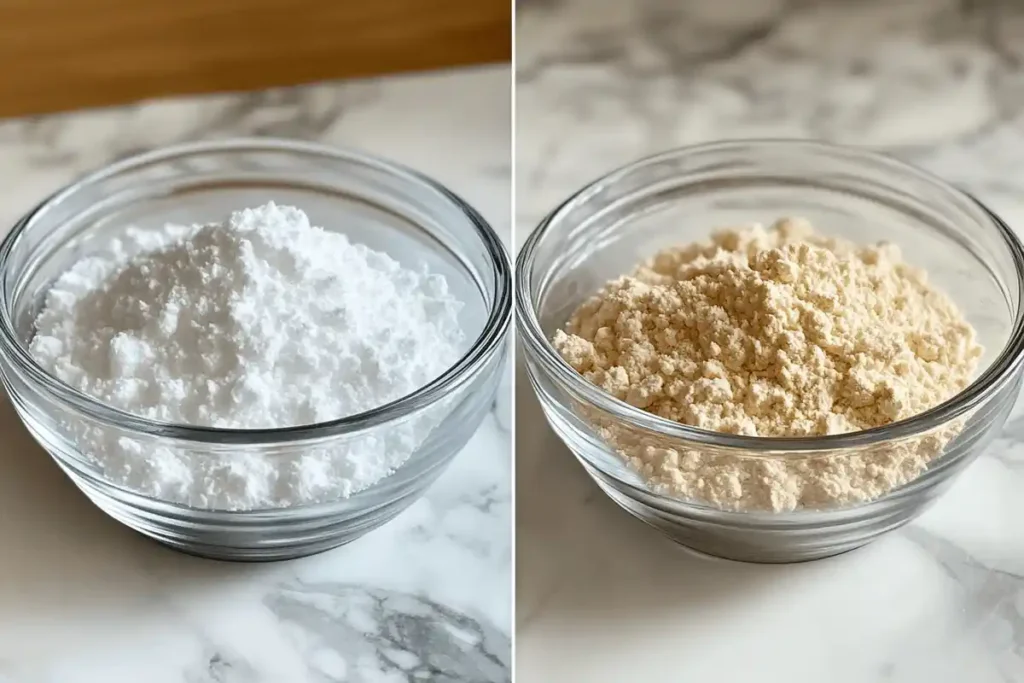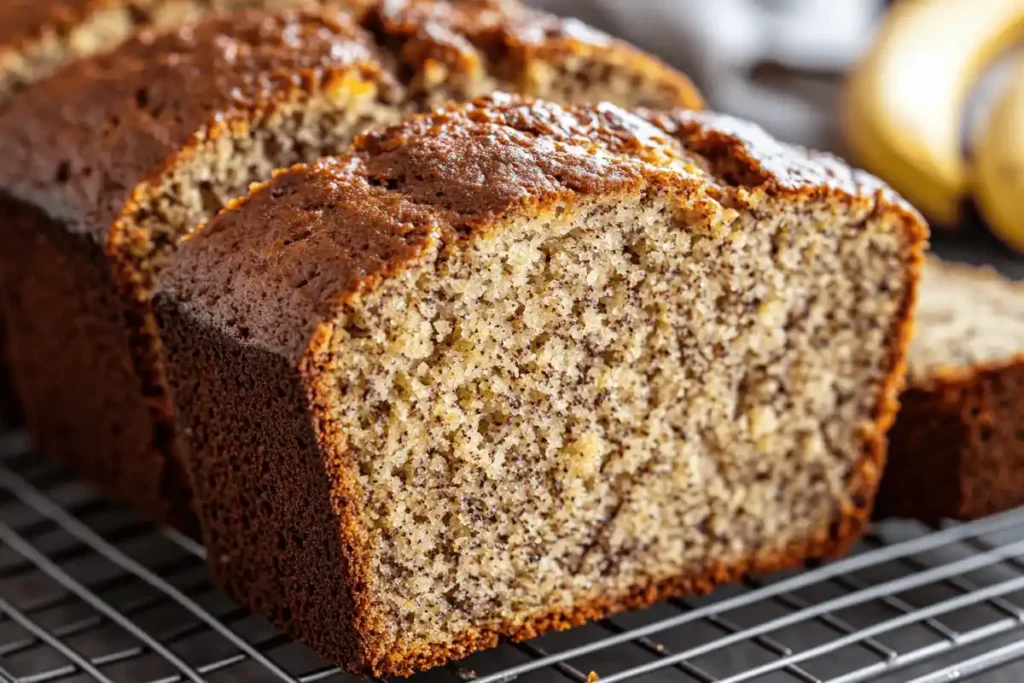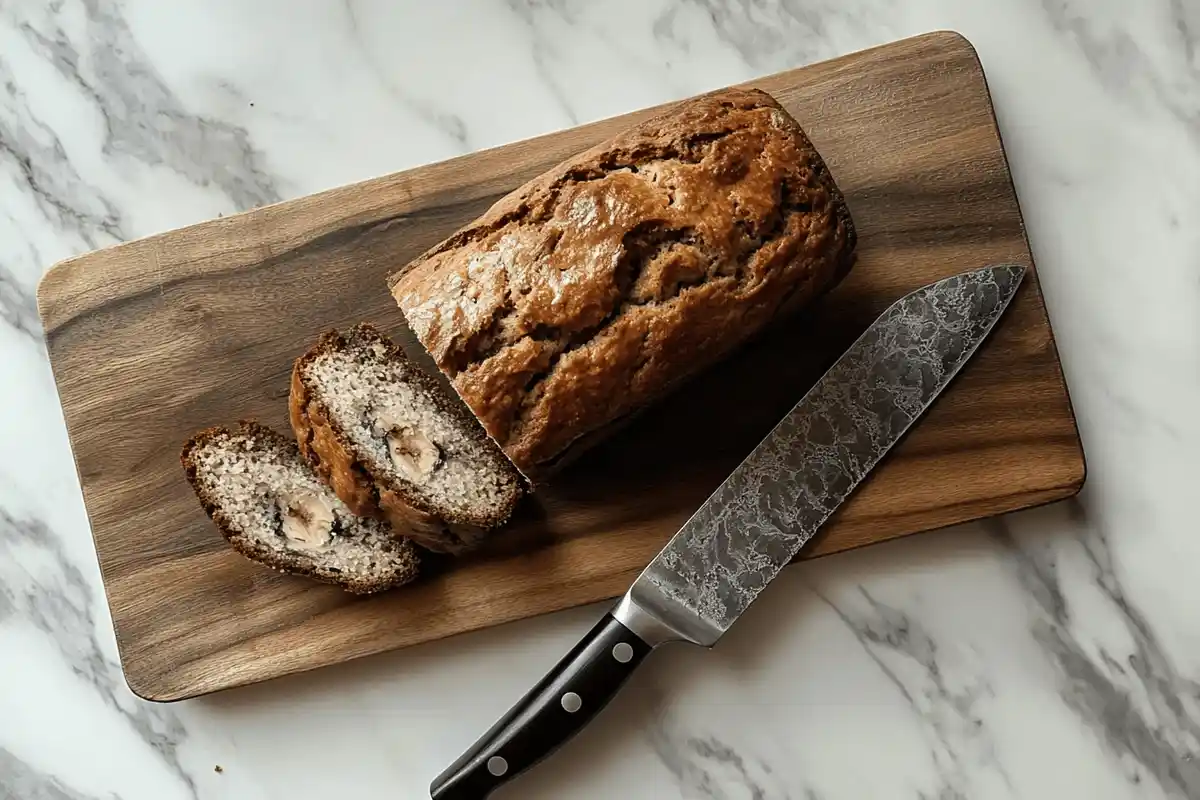Banana bread is a beloved treat, known for its moist texture and rich flavor. This article delves into why baking powder is often omitted from banana bread recipes. Learn the difference between baking soda and baking powder to achieve the best rise and texture.
Banana bread holds a special place in many hearts and kitchens. Its simplicity and comforting flavors make it a go-to recipe for many bakers. Baking soda is typically the leavening agent of choice in this recipe. But why do you not put baking powder in banana bread? This is a crucial question for any aspiring baker. Understanding the chemistry behind baking is key to success in the kitchen, particularly when it comes to achieving the perfect texture and rise in your loaf. You can check out a more general overview of leavening agents on Wikipedia.
Leavening agents are the magic behind baked goods. They create the bubbles that make cakes and breads rise, resulting in a light and airy texture. These agents can be biological, like yeast, or chemical, like baking soda and baking powder. A detailed explanation about leavening agents can be found on The Spruce Eats. Knowing the unique characteristics of these chemical leaveners will help you understand why certain recipes call for one over the other. Moreover, understanding how these leaveners react with different ingredients is essential for successful baking, and specifically for understanding the question of why do you not put baking powder in banana bread. Let’s delve into the specifics of each. More information on baking basics can be found on King Arthur Baking.
Table of contents
Understanding Leavening Agents

Close-up view of baking soda and baking powder showing their differences.
Leavening agents are substances that produce gas, causing batters and doughs to rise. They are fundamental for achieving the desired texture in all baked goods. These agents create the lightness and volume that make baked goods appealing. Baking soda and baking powder are both chemical leavening agents, but they work differently. Baking soda, also known as sodium bicarbonate, is a single-component leavening agent. Conversely, baking powder is a complete leavening system, containing both an acid and a base.
Baking soda is a base, requiring an acidic ingredient to create carbon dioxide, which makes baked goods rise. It needs moisture and an acid to activate its leavening power. Common acids used in baking include buttermilk, yogurt, brown sugar, and fruits like bananas. Baking powder, on the other hand, is a pre-mixed leavening agent. It contains sodium bicarbonate, an acid, and a drying agent, usually cornstarch. This means that baking powder is activated with the addition of any liquid.
The main difference between baking soda and baking powder lies in their composition and activation process. Baking soda needs both an acid and moisture to create the gas needed for leavening. Baking powder, however, already contains the necessary components. This makes baking powder more versatile, while baking soda is often chosen in recipes with acidic ingredients. Therefore, when considering why do you not put baking powder in banana bread, we need to look closer at how these work in this specific recipe.
The Role of Baking Soda in Banana Bread
Baking soda is the preferred leavening agent for banana bread due to its chemical reaction with the recipe’s acidic components. Many banana bread recipes include ingredients like buttermilk, brown sugar, and, of course, ripe bananas. These ingredients provide the acidic environment needed for baking soda to work effectively. Baking soda is activated when it reacts with these acidic ingredients, releasing carbon dioxide.
This chemical reaction is what makes banana bread rise, resulting in its signature light and tender crumb. The baking soda works in conjunction with the moisture present in the batter. For example, ripe bananas not only provide flavor but also add necessary moisture and acidity. The reaction is not only about producing lift, however; it also plays a part in the taste and overall texture of the final product. Therefore, baking soda is critical in achieving that classic banana bread outcome.
Furthermore, the use of baking soda in banana bread produces a specific texture that is both soft and slightly dense, unlike a cake which tends to be lighter. This is because baking soda provides a more gradual release of gas than baking powder. Consequently, the resulting crumb is less porous and more evenly textured. Additionally, baking soda is excellent at neutralizing acids, creating a balanced flavor in banana bread. All these factors play a crucial part in explaining why do you not put baking powder in banana bread.
The Downside of Baking Powder in Banana Bread

A banana bread with a dense texture and uneven rise due to using baking powder.
Baking powder is generally unnecessary in banana bread due to the presence of acidic ingredients that perfectly activate baking soda. If baking powder were used instead of baking soda, or used alongside it, the result could be an overly cakey texture. Moreover, the double-acting nature of baking powder could create uneven rising. The first reaction happens when liquid is added, and the second when heated, which could cause a dome top, rather than the classic smooth top of banana bread. Indeed, the double rise might not be ideal for the type of crumb we are aiming to achieve in this recipe.
Baking powder can sometimes cause flavor issues in banana bread, especially if too much is used. A metallic aftertaste is one of the potential problems when too much baking powder is used. This undesirable flavor can overshadow the natural taste of the bananas and other ingredients. Furthermore, baking powder can also lead to a drier crumb in banana bread. The extra lift and open cell structure can cause the loaf to dry out faster than with baking soda. Therefore, baking soda is favored for its more balanced action.
In addition, using baking powder can affect the overall balance of ingredients. Since baking powder contains an acid, adding it to a batter that already contains acidic ingredients from the bananas, buttermilk, or brown sugar can lead to a less predictable chemical reaction. It’s important to keep in mind that baking powder also contains additional salt which can alter the final taste of the baked good. Therefore, understanding these effects makes it clearer why do you not put baking powder in banana bread.
Achieving the Perfect Rise in Banana Bread Without Baking Powder
Using the correct amount of baking soda is crucial for achieving the perfect rise and texture in banana bread. Too little and the loaf will be dense and flat, whereas too much can cause it to collapse and taste bitter. Additionally, using very ripe bananas is important. Not only do they add flavor and moisture but, as we’ve discussed, they provide the necessary acidity. Also, ingredients like buttermilk or yogurt help enhance the chemical reaction with baking soda. Consequently, using these ingredients properly will help you achieve the best results.
Mixing the batter correctly is another key to success. Overmixing can develop gluten and result in a tough loaf. The key is to mix the wet and dry ingredients until just combined. Avoid vigorous mixing, however. Furthermore, baking at the correct oven temperature and for the proper time is essential. Too high a temperature can result in a loaf that’s browned on the outside but undercooked inside. Similarly, too low a temperature can make the loaf dense. Therefore, adhering to the recipe ensures perfect results.
Finally, a good banana bread recipe that uses baking soda correctly will help you avoid the need for baking powder. Using fresh ingredients and the right techniques allows baking soda to do its job perfectly. Indeed, the correct balance of acidity, moisture, and leavening will create the ideal texture and rise. By following the correct procedures, you’ll realize why do you not put baking powder in banana bread, as it is not necessary.
Exceptions and Variations
While baking soda is generally preferred, there may be certain exceptions or recipe variations where a small amount of baking powder might be included in banana bread. These variations often come down to the specific ingredient ratios. For instance, if a banana bread recipe uses fewer acidic ingredients like buttermilk or ripe bananas, a touch of baking powder can be used to supplement the leavening power of the baking soda. However, this is not a typical approach.
Regional and personal preferences can also influence the type of leavening agent used. Some cooks may choose to experiment with baking powder to see how it changes the loaf’s texture and rise. These variations can sometimes lead to unique results, but it is crucial to understand the impact on the overall texture. Furthermore, some recipes combine baking soda and baking powder. The ratio must be carefully measured to achieve the desired result.
Furthermore, alternative leavening techniques can also be used. Some bakers may choose to use a sourdough starter for leavening, which also brings additional flavors. These methods offer different approaches to baking banana bread, but the classic method of using baking soda is tried and true. Therefore, while variations exist, understanding the basic science will guide your decisions.
Common Mistakes and Troubleshooting
Using baking powder instead of baking soda can lead to several issues in banana bread. As discussed, it can create an overly cakey and sometimes dry texture and potentially leave a metallic aftertaste. Therefore, it’s essential to double-check the recipe before beginning to bake. If you accidentally add baking powder instead of baking soda, the best thing to do is to start again with the correct ingredient. However, if you catch your mistake early, you can remove some of the batter. You can dilute it by adding more of the other batter ingredients proportionally (flour, liquids, sugar) .
Flat or dense banana bread can result from several common mistakes. For example, using old or expired baking soda can cause the leavening to fail. Therefore, it is important to use fresh ingredients and check the expiration date. Additionally, adding too much liquid can also cause a dense loaf. Furthermore, overmixing the batter can make the bread tough and compact. A good tip is always to measure ingredients accurately and not add liquids without measuring the flour.
Moreover, the temperature of the ingredients also matters. Using cold eggs or cold dairy can impact the chemical reactions and result in an uneven texture. Accordingly, allowing cold ingredients to come to room temperature before baking can make a difference. Finally, always follow the baking instructions carefully, paying close attention to the temperature and baking time. All these tips can help prevent mistakes when making banana bread.
Conclusion
In conclusion, baking soda is the preferred leavening agent in banana bread. It reacts perfectly with the acidic ingredients in the recipe, creating a light, tender, and slightly dense crumb. Baking powder, however, can lead to an overly cakey texture, and potentially introduce unwanted flavors. Therefore, it is generally avoided in standard banana bread recipes. Ultimately, understanding the science behind leavening agents is essential for baking success.
Understanding how baking soda interacts with the acidity from buttermilk, ripe bananas, and brown sugar explains why do you not put baking powder in banana bread. Therefore, by focusing on using fresh ingredients, correct measurements, and proper techniques, you can create amazing loaves of banana bread using baking soda. Finally, experiment with the recipe and continue practicing to perfect your technique. These steps will certainly lead you to the best results.
Frequently Asked Questions (FAQs)
Using baking powder instead of baking soda can lead to a cakey texture, a quicker rise, and a metallic taste. It won’t react correctly with acidic ingredients and might make the bread too crumbly. Therefore, it is not the best substitution.
If a recipe needs baking powder, not adding it will cause the final product to be flat and dense. It won’t rise as needed. Always add the leavening agent the recipe calls for.
Too much baking powder can make banana bread too cakey, with a metallic aftertaste. It might also rise too fast and then collapse. It’s always important to measure accurately.
Baking powder helps bread rise but can make it too airy and cake-like if overused. Too much can lead to a bitter taste. Use the amount a recipe specifies for the best outcome.

